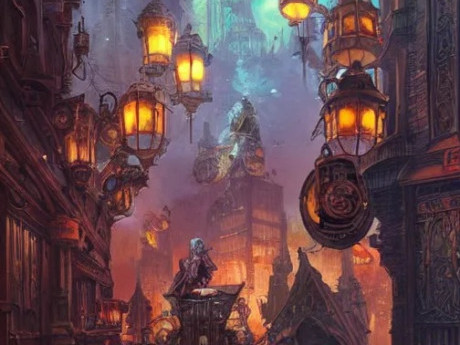Characters in this post

View character profile for: Lorem Ipsum
Touring the Exposition Universelle - Part 2/2
Paris, France
Date: May 8, 1889
Location: The Palaces of Liberal and Fine Arts and other places
Touring the Exposition Universelle
Next the pair visited the Palaces of Liberal and Fine Arts, each with a richly decorated dome, facing each other across a garden and reflecting pool between the Eiffel Tower and the Palace of Machines. Both were designed by Jean-Camille Formigé with a similar plan. Both buildings had modern iron frames abundance of glass, but were completely covered with colorful ceramic tiles and sculpted decoration. Afterward they took a short break to converse over the exquisite works of expression and art. Then briefly explored an elaborate iron and glass structure decorated with ceramic tiles in a Byzantine-Egyptian-Romanesque style by the Paris architect Pierre-Henri Picq.
The Exposition featured numerous fountains and reflecting pools, particularly in the mall that ran between the Eiffel Tower and the Palace of Machines. The largest fountain, near the Eiffel Tower, was entitled "The City of Paris enlightens the world with its torch." The fountain was designed by Jean-Camille Formigé, who designed the nearby Palaces of Fine Arts and Liberal Arts. The other major fountain, not far away, was "The Five Parts of the World", illustrating the continents. It was designed by Francis de Saint-Vidal. The two decided to enjoy a small pastry at each fountain, which ended up with her father eating most of the pastry while Lorem gesturally sketched the fountain. In both instances, they took a slight reprieve and simply enjoyed conversation directed primarily at people watching.
Next they investigated the interesting Rue de Caire ("Street of Cairo"). It was a popular attraction designed to recreate the architecture and street life of Cairo. It provided a striking contrast to the very modern Palace of Machines, next to it. It was a winding street, with buildings at odd angles, and featured, among other buildings, a minaret, two mosques, a school and two ornamental gateways. The doors, windows, and architectural fittings and decoration were real, imported from demolished buildings in Cairo. The street was populated by real Egyptians in costumes, including musicians, belly dancers, artists, craftsmen, and vendors of various Egyptian foods and delicacies. Lorem found this area to be quite intriguing as it stretched the boundaries of her predominantly westernized experience and provided ample novelty to graph into her imagination.
The Exposition featured several other examples of picturesque habitations and villages from around the world, including a Javanese village and recreated houses of villages from Senegal, Benin, and other colonies, with costumed residents. The Pavilions of the participating nations were located along the edge of the Champ de Mars. The Latin American nations had particularly colorful and lavish structures.
In addition to the nations pavilions, there were pavilions of specialized industries, such as the Suez Canal company, the pavilion of the Transatlantic steamship company, the telephone and clockwork pavilions, and the Pavilions of magic. The latter of which Lorem found to be interesting, but hard to reconcile. It was her hypothesis that magic was simply a crude way of explaining things which had not yet been figured out properly via the scientific method. It would be a dream come true if she could figure out how magic actually worked. The Palace of Food Products was a very large and ornate structure, presenting French food and wine products; whereby, the purchased a few delicacies to make lunches for the next couple of days.
They decided to make a pit stop back at the Wuppertal Hangar in order to drop off their grocery bags, books, and other assorted purchases. On their way, the passed by a corridor designed to showcase different architectural construction practices through the ages. The houses were arranged by century and by continent, beginning with Garnier's idea of prehistoric dwellings and huts, through the Ancient Egyptians, Greeks, Romans and other early civilizations, through the Middle Ages and Renaissance to the modern then houses from Japan, and China and the homes of Eskimos, and dwellings from Africa, Japan, China and Lapland, and dwellings of Native Americans, Aztecs and Incas. The dwellings were designed by Garnier with more imagination than strict historical accuracy, but they were picturesque nonetheless.
